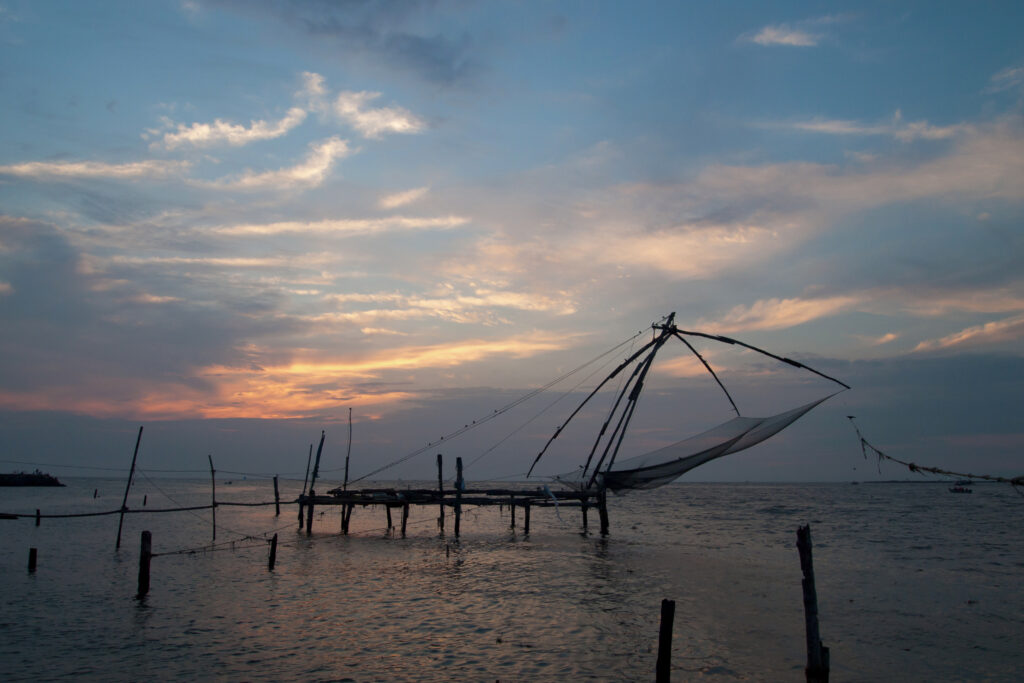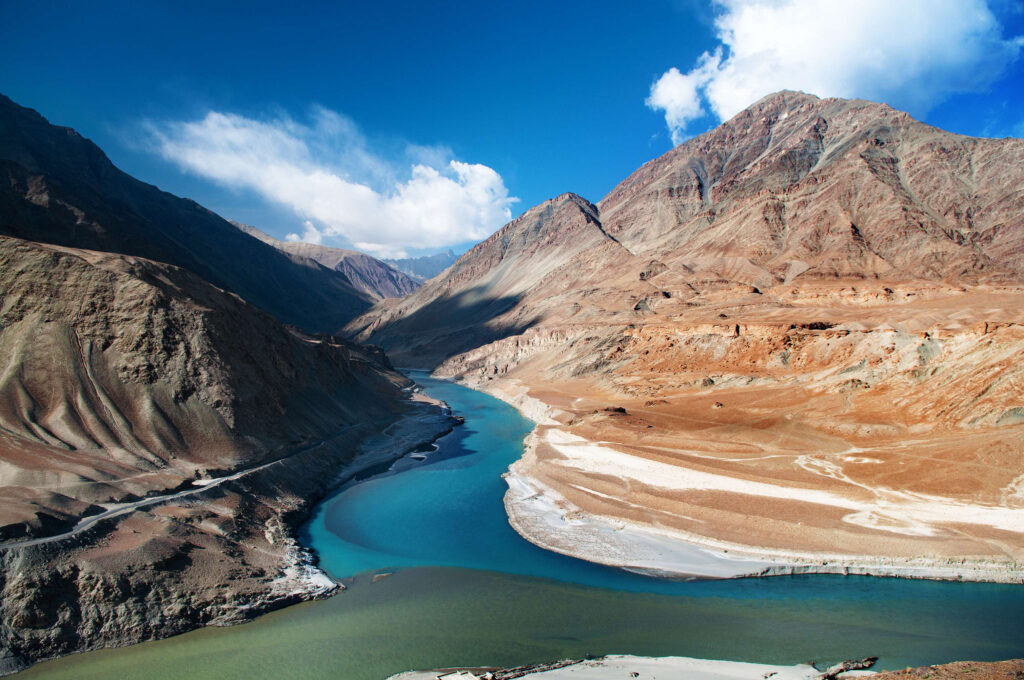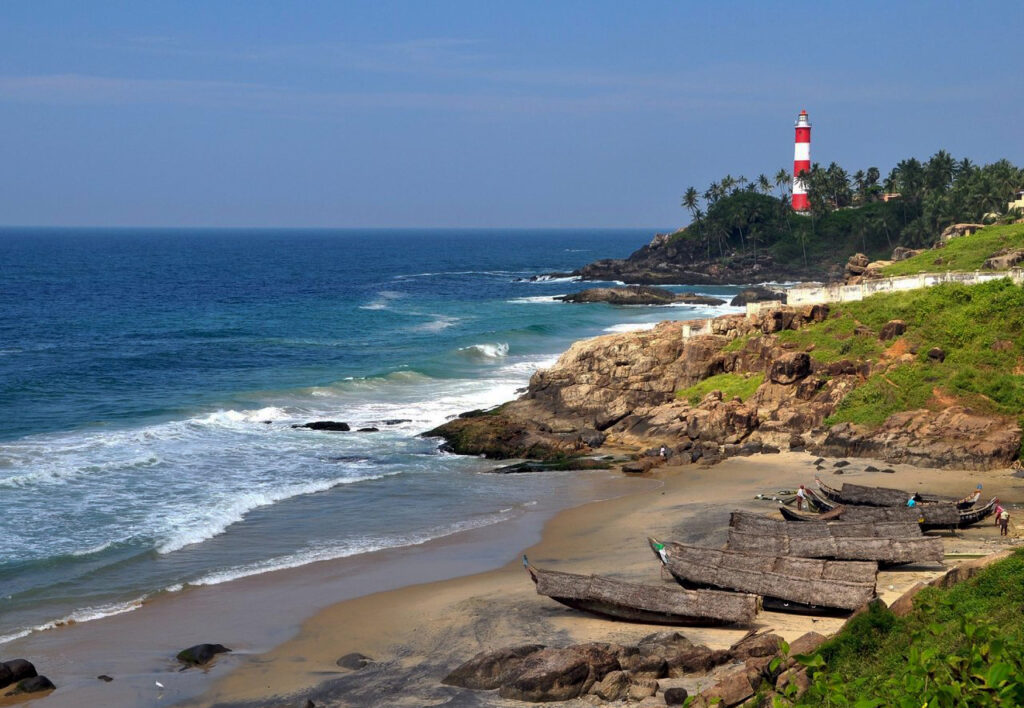The Taj Mahal is an ivory-white marble mausoleum on the right bank of the river Yamuna in Agra, Uttar Pradesh, India. It was commissioned in 1631 by the fifth Mughal emperor, Shah Jahan to house the tomb of his favourite wife, Mumtaz Mahal; it also houses the tomb of Shah Jahan himself.
Taj Mahal (Timing, Fees & Everything)
Click here to get location of Taj Mahal
Address :: Dharmapuri, Forest Colony, Tajganj, Agra, Uttar Pradesh 282001, India.
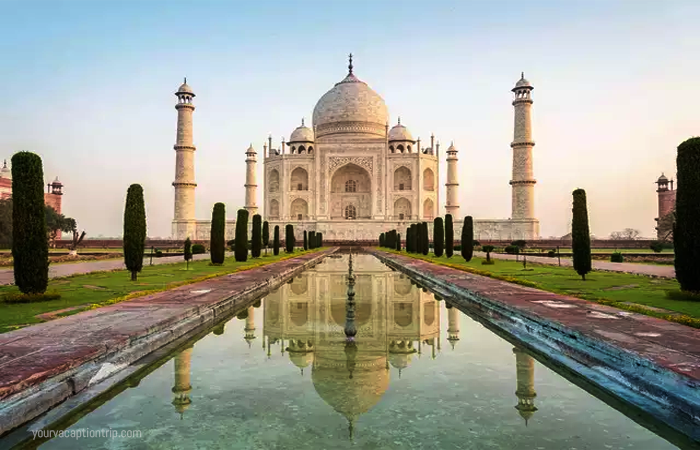
Timing For Taj Mahal Agra
Taj Mahal opens 30 Minutes before sunrise and closes 30 Minutes before sunset during normal operating days
Taj Mahal is closed on Fridays for general viewing. Other days it is always open.
Entry Gates
| Taj Mahal Entry Gates | Taj Mahal Opening Hours |
|---|---|
| Western Gate (Main Gate) | An hour before sunrise and about 45 minutes prior to sunset |
| Eastern Gate | An hour before sunrise, and 45 minutes before sunset |
| Southern Gate | Only Exit |
Taj Mahal Ticket Price
To Book your online Ticket of Taj Mahal you can visit official website
| Entry Fee | ||
| S.No. | Tourist Type | Amount (Rs.) (Inclusive of ASI & ADA fees) |
| 1. | Foreign tourist | 1100/- + 200/- Additional for visiting main mausoleum (Optional) |
| 2. | Citizens of SAARC and BIMSTEC Countries | 540/- + 200/- Additional for visiting main mausoleum (Optional) |
| 3. | Domestic/Indian/OCI Cardholder | 50/- + 200/- Additional for visiting main mausoleum (Optional) |
Unique things about the taj mahal
one of the most famous and recognizable landmarks in the world. Here are some unique things about the Taj Mahal:
- Symbol of Love: The Taj Mahal was built by the Mughal Emperor Shah Jahan in memory of his beloved wife, Mumtaz Mahal. It is considered one of the greatest gestures of love in history.
- Architectural Marvel: The Taj Mahal is renowned for its exquisite architectural design. It combines elements of Persian, Islamic, and Indian styles. The white marble structure is beautifully adorned with intricate carvings and delicate inlay work.
- UNESCO World Heritage Site: The Taj Mahal was designated as a UNESCO World Heritage Site in 1983. It is recognized for its outstanding universal value and cultural significance.
- Movable Minarets: The four minarets surrounding the main dome of the Taj Mahal appear perfectly upright when viewed from any angle. However, they are slightly tilted outwards. This architectural technique was employed to prevent the minarets from collapsing onto the main structure in case of an earthquake.
- Changing Colors: The color of the Taj Mahal appears to change throughout the day. It reflects different hues depending on the sunlight—pinkish in the morning, milky white during the day, and golden at dusk.
- Calligraphic Inscriptions: The Taj Mahal is adorned with intricate calligraphic inscriptions from the Quran. These inscriptions are made of black marble and are skillfully incorporated into the design of the monument.
- Gardens and Reflecting Pool: The Taj Mahal is surrounded by well-maintained gardens, known as the Charbagh, on three sides. The gardens feature geometric patterns, fountains, and a centrally placed reflecting pool that beautifully mirrors the Taj Mahal.
- Optical Illusions: The architects of the Taj Mahal employed various techniques to create optical illusions. For example, the size of the tomb and its surrounding elements is skillfully adjusted to give an impression of a perfectly symmetrical structure, even though some elements are slightly larger or smaller to maintain the visual balance.
- Pietra Dura Artwork: The Taj Mahal features intricate pietra dura artwork, which is a form of inlay work using semi-precious stones. The stones are meticulously carved and placed to create floral motifs, geometric patterns, and other decorative elements.
- Eternal Resting Place: The Taj Mahal houses the tombs of both Emperor Shah Jahan and his wife, Mumtaz Mahal. These tombs are located in the lower level of the main structure and are the focal point of the interior.
Things to keep in mind when visiting Taj Mahal
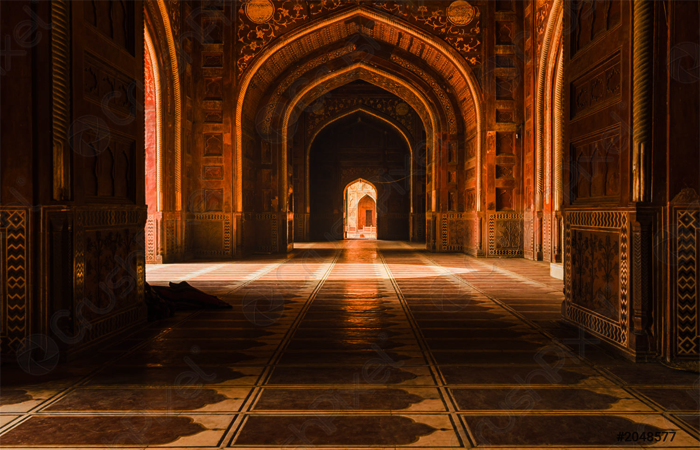
- The ticket booths at the Taj Mahal open roughly an hour before daybreak.
- At the entrance gates, there are separate lines for men and women.
- Use the shoe covers that are offered at the counter.
- There are golf carts and battery buses that run between the parking lot and the Taj Mahal.
- Tickets for foreigners include transportation to the entrance gate by golf cart or bus.
- By the ticket booths, there is free luggage storage.
- It is not permitted to take pictures within the tomb chamber.
- Within and around the Taj Mahal compound, drones are not permitted.
- Additionally, tripods are not permitted anywhere in the compound.
- Both smoking and drinking are outright forbidden.
- Additionally prohibited are eating and littering.
- Mobile devices must be kept off, in flight mode, or on mute.
Taj Mahal History
The Taj Mahal was built in the 17th century by the Mughal Emperor Shah Jahan as a mausoleum for his beloved wife, Mumtaz Mahal. Construction of the monument began in 1632 and took around 20 years to complete. The Taj Mahal stands as a magnificent example of Mughal architecture, combining Persian, Islamic, and Indian influences. It is a symbol of eternal love and has become one of the most iconic and recognized landmarks in the world.
Photo Gallery Of The Taj Mahal
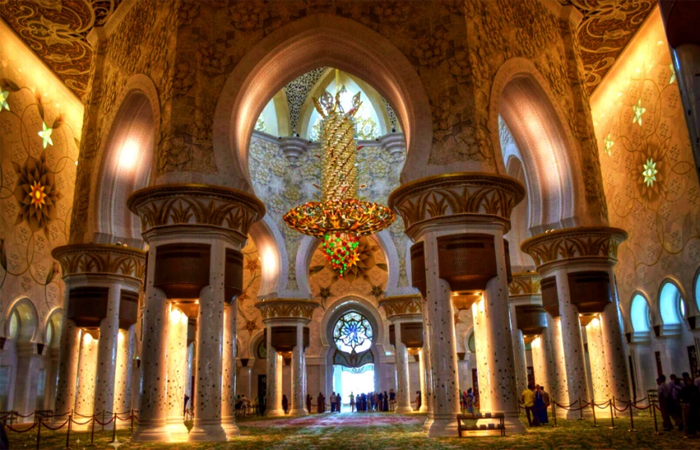
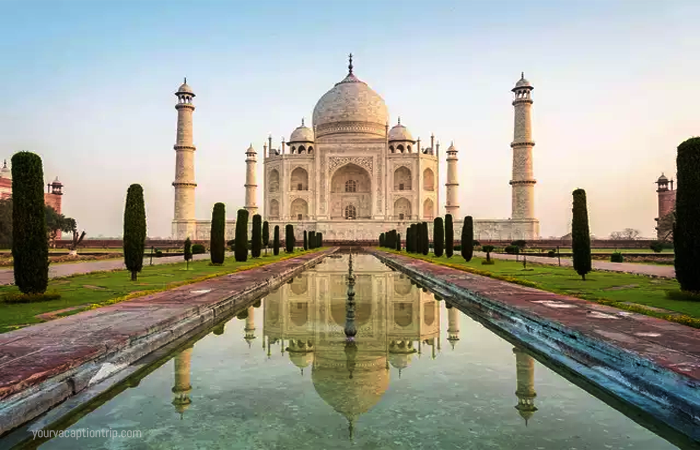
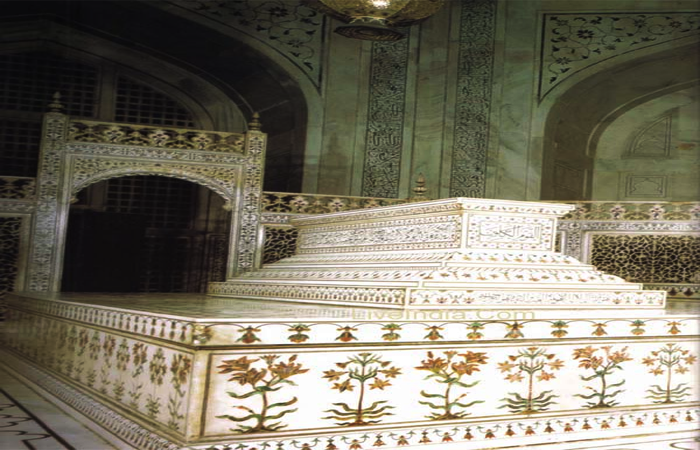

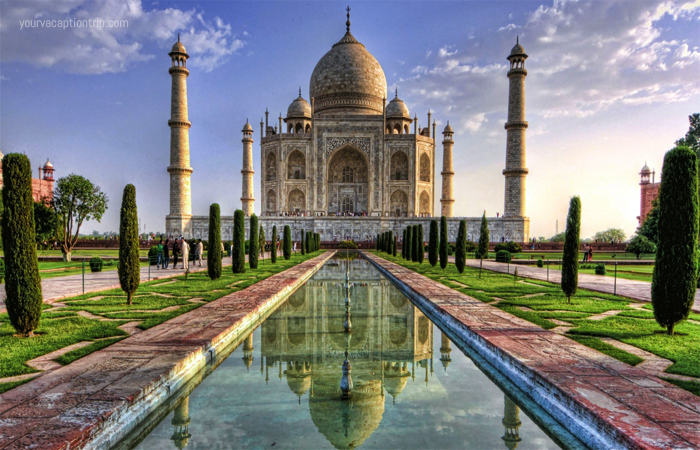
Trip Plan For The Taj Mahal
Certainly! Here’s a recommended trip plan for visiting the Taj Mahal:
Day 1:
- Arrive in Agra: Make your way to Agra, either by flight, train, or road. Check into your hotel and take some time to relax and freshen up.
- Sunset Visit to Mehtab Bagh: In the evening, head to Mehtab Bagh, a garden complex located across the Yamuna River from the Taj Mahal. This vantage point offers a stunning view of the Taj Mahal at sunset, providing a beautiful introduction to the monument.
- Dinner: Enjoy dinner at a local restaurant in Agra, savoring the flavors of Mughlai cuisine.
Day 2:
- Sunrise Visit to the Taj Mahal: Wake up early to catch the sunrise over the Taj Mahal. It’s the best time to visit as the crowd is usually smaller, and the soft morning light creates a magical atmosphere. Spend ample time exploring the grandeur of the monument, admiring the intricate details, and learning about its history.
- Breakfast: After visiting the Taj Mahal, have breakfast at a nearby café or your hotel.
- Agra Fort: After breakfast, head to Agra Fort, another UNESCO World Heritage Site. Explore this magnificent red sandstone fort, which served as the residence of Mughal emperors. Admire the architecture, visit the various palaces, and enjoy panoramic views of the Taj Mahal from certain vantage points within the fort.
- Lunch: Enjoy a traditional Indian lunch at a local restaurant in Agra.
- Itmad-ud-Daulah’s Tomb: In the afternoon, visit Itmad-ud-Daulah’s Tomb, also known as the Baby Taj. This tomb is an exquisite example of Mughal architecture and is often considered a precursor to the Taj Mahal. Explore the beautiful gardens and the delicate marble artwork.
- Explore Local Markets: Take some time to explore the local markets in Agra, where you can find handicrafts, textiles, and souvenirs. Agra is famous for its marble work, leather goods, and intricate embroidery.
- Dinner: Enjoy dinner at a restaurant of your choice, trying out more local delicacies.
Day 3:
- Optional: Taj Mahotsav (if available): If your visit coincides with the Taj Mahotsav, a ten-day cultural festival held in Agra, consider attending. The festival showcases various forms of Indian art, crafts, music, and dance.
- Departure: After breakfast, check out from your hotel and depart from Agra, either heading back home or continuing your journey to other destinations.
People Also Asks About Taj Mahal :
Is the Taj Mahal open every day?
The Taj Mahal is open to visitors every day, except on Fridays when it is closed for prayers.
Is photography allowed inside the Taj Mahal?
Yes, photography is allowed inside the Taj Mahal, but there are restrictions in certain areas. Tripods are not permitted, and there are guidelines to ensure the preservation of the monument.
Does the Taj Mahal change color?
Yes, the color of the Taj Mahal appears to change depending on the sunlight. It can appear pinkish in the morning, milky white during the day, and golden at dusk.
Who built the Taj Mahal?
The Taj Mahal was built by the Mughal Emperor Shah Jahan in memory of his wife, Mumtaz Mahal.
Can we visit Taj Mahal at night?
Night Viewing Timing: 20:30 hrs. to 00.30 hrs. in 8 batches of max. 50 people each. Time duration for each batch is half an hour (30 minutes).
Can I visit Taj Mahal in shorts?
There is not actually a dress code for the Taj Mahal
Best Restaurants in Agra, Near Taj Mahal
- 1. Peshawari
- 2. Esphahan
- 3. Agra Chaupati
- 4. Pinch of Spice
- 5. Dashaprakash
- 6. Jahanpanah
In conclusion, seeing the Taj Mahal is a once-in-a-lifetime opportunity that provides a window into the complicated beauty and rich history of Mughal architecture. The Taj Mahal, one of the most famous landmarks in the world, mesmerizes tourists with its majesty, complex intricacies, and heartfelt love tale that inspired its construction.

